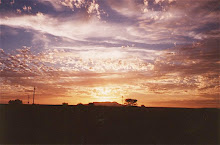“With each spring thaw for thousands of years the Mississippi River carried off the rich topsoil of the Midwest. Then, just south of Memphis, the river predictably bulged out over its banks, hurling water and purloined silt onto a low-lying alluvial basin nearly 200 miles long and up to 70 miles across at its widest point…. Centuries of annual inundation and departure thus deposited a thick, rock-free, and fecund soil upon the Yazoo-Mississippi Delta – conditions fit for a king. King Cotton, that is.” John Wilis, Forgotten Time
The landscape of Hollandale, like most of the Mississippi Delta, is as flat as an uncluttered desktop. But the land itself is as fertile as any in the world, a gift of Mississippi River.
The source of the Mississippi River is Lake Itasca in Minnesota. It is the longest river in the United States, about 2,320 miles, stretching from Lake Itasca to New Orleans, LA and then emptying in the Gulf of Mexico. A drop of water in Lake Itasca takes about 90 days to reach the Gulf.
The river has drained about 41% of the United States over the past 15,000 years. The endless flooding and changing of the river deposited an enormous amount of sediment throughout the Delta. Stand in the Mississippi Delta and you are standing on the remains of the Rocky Mountains. This alluvium deposit created the most fertile land in the world, perfect for growing the labor-intensive cash crop of cotton.
The Mississippi River is located 12 miles to the West of Hollandale, but a tributary, Deer Creek, runs alongside, and sometimes through, the town. Because of the fertile land and of its proximity to Deer Creek, Hollandale, historically, had access to good resources and trade. As cotton production became more mechanized and as the country shifted from rivers and trains to trucks and planes as the primary means of transportation, these benefits faded.
The train tracks are, perhaps, the most important geographical feature of Hollandale because they literally divide the town. For most of the town’s existence blacks have lived on one side of the tracks and whites on the other. “Martin Luther King Jr. Blvd.” runs through the black section of town and then becomes “Bee Bee Street” on the other side of the tracks. On one side of the tracks there is a black café, Marie’s. On the other side, a white café, Jane’s.
“They are what separates us,” said Ashley Richmond, a 17 year old black female, referring to the tracks...
Subscribe to:
Post Comments (Atom)


No comments:
Post a Comment